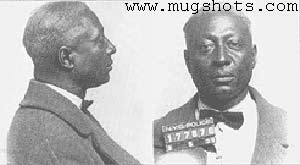“In 1915 he was convicted “of carrying a pistol” and sentenced to do time on a chain gang, from which he escaped. In January 1918 he was imprisoned a second time, this time after killing one of his relatives in a fight over a woman. In 1925 he was pardoned and released, having served seven years, or virtually all of the minimum of his seven-to-35-year sentence, after writing a song appealing to Governor Neff for his freedom, (pardon by the governor was at that time the only recourse for prisoners, since in most Southern prisons there was no provision for parole).
In 1930, Lead Belly was back in prison, after a summary trial, this time in Louisiana, for attempted homicide — he had knifed a white man in a fight. It was there, three years later (1933), that he was “discovered” by folklorists John Lomax and his then 18-year-old son Alan Lomax during a visit to the Angola Prison Farm. Deeply impressed by his vibrant tenor voice and huge repertoire, they recorded him on portable aluminum disc recording equipment for the Library of Congress. They returned to record with new and better equipment in July of the following year (1934), all in all recording hundreds of his songs. On August 1, Lead Belly was released (again having served almost all of his minimum sentence), this time after the Lomaxes had taken a petition to Louisiana Governor Oscar K. Allen at Lead Belly’s urgent request. The petition was on the other side of a recording of his signature song, Goodnight Irene.” -from Wikipedia
If you are a Nirvana fan, you may know at least one of his songs, “Where did you sleep last night”, as it was covered on the MTV Unplugged album.
This is an incredible capture of both an American legend and the roots of American folk, blues and ultimately rock and roll.

